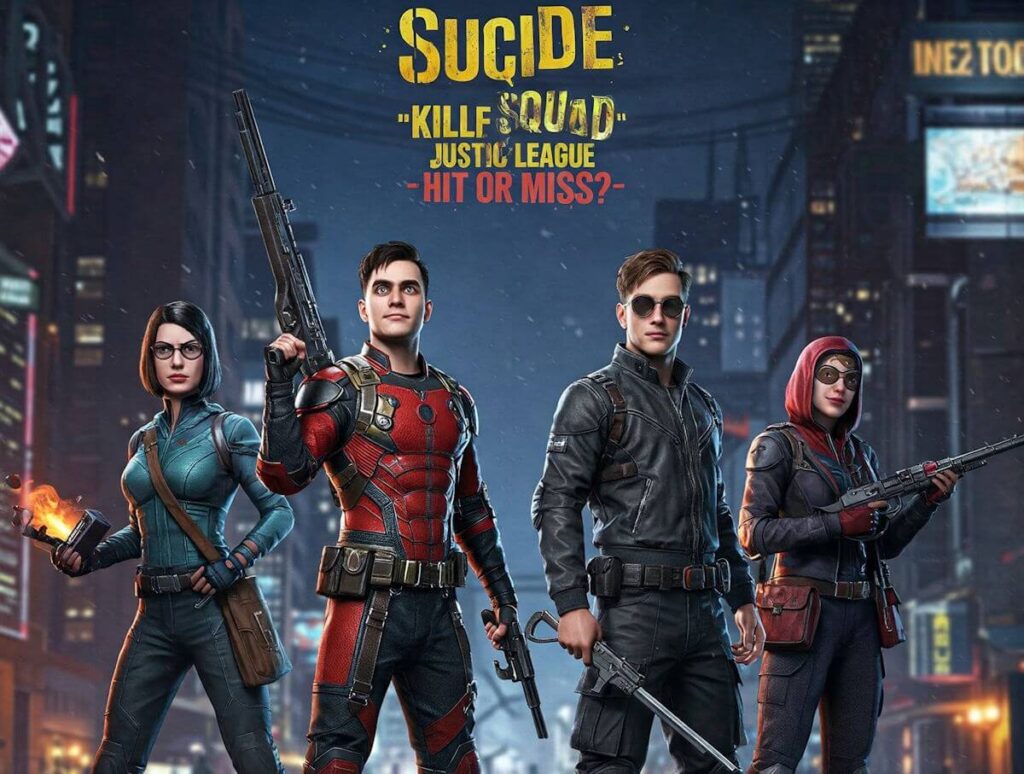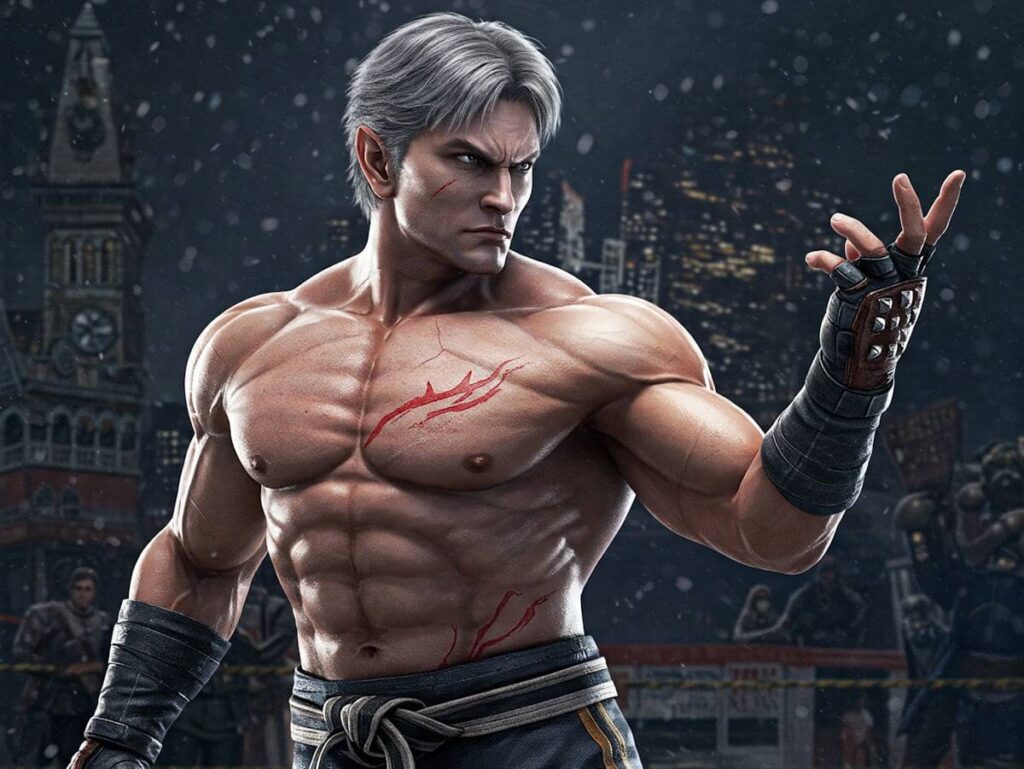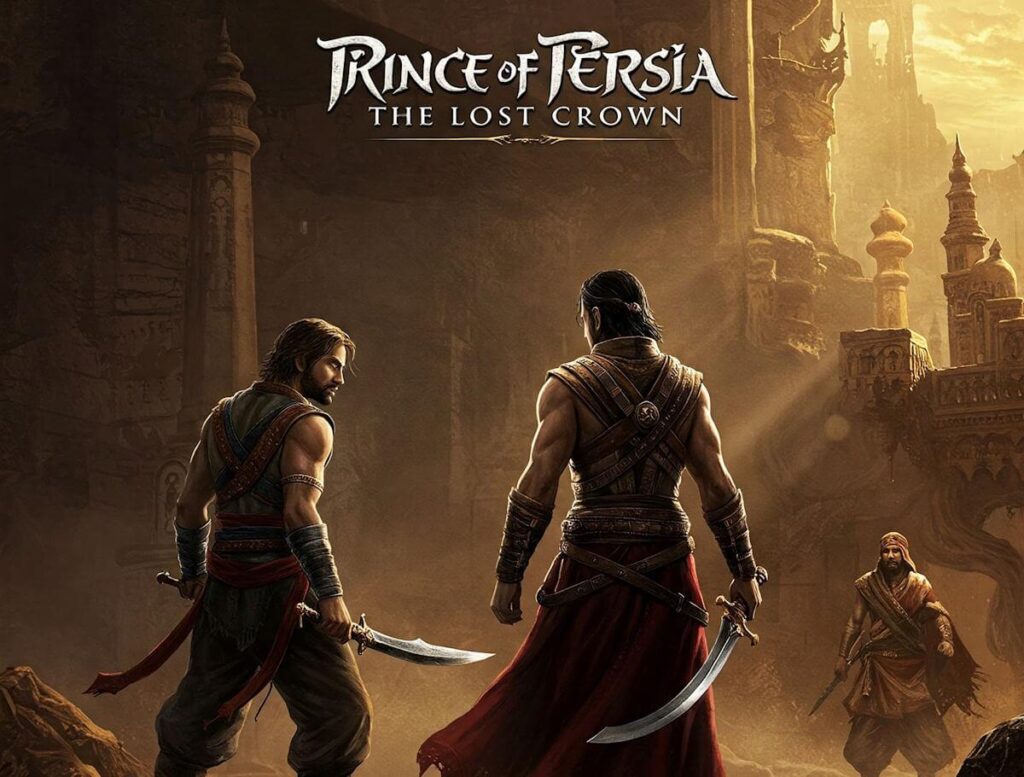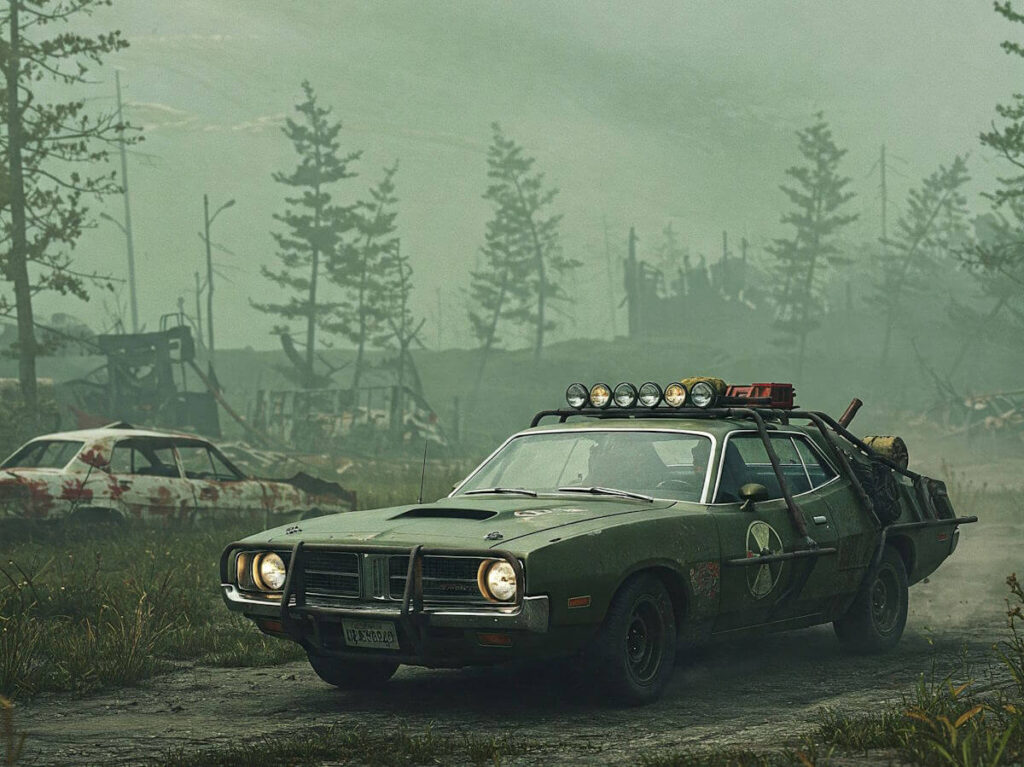“Suicide Squad: Kill the Justice League” is an action-adventure video game developed by Rocksteady Studios, famed for their previous work on the acclaimed “Batman: Arkham” series. Officially announced in August 2020, this game marks Rocksteady’s first foray into a narrative centered around the infamous anti-heroes from the DC Comics universe. Set to be released on May 26, 2023, the anticipation surrounding the game has been fueled by the studio’s impressive track record in storytelling and gameplay mechanics.
The primary premise of “Suicide Squad: Kill the Justice League” centers around a nefarious plot wherein the Justice League, typically exemplars of virtue, have been corrupted by a mysterious force. This storyline introduces players to the Suicide Squad, composed of notorious villains such as Harley Quinn, Deadshot, Captain Boomerang, and King Shark. Tasked by Amanda Waller, the Squad must eliminate their former heroes who have become threats to humanity. This internal conflict highlights the juxtaposition of heroism and villainy, as the characters navigate their mission while dealing with the moral complexities their roles entail.
Players can expect an engaging single-player campaign, featuring both solo and cooperative multiplayer gameplay. Each character comes equipped with unique abilities and skills that enrich the gameplay experience, allowing for varied combat styles. As players traverse the open-world environment of Metropolis, they will confront a diverse array of enemies, culminating in epic showdowns with the brainwashed members of the Justice League. The game promises to blend intense combat, humor, and the compelling narrative that Rocksteady is known for, making it a unique addition to the superhero genre.
Game Mechanics and Gameplay
Suicide Squad: Kill the Justice League offers an engaging fusion of combat mechanics, character abilities, and multiplayer elements, catering to both solo and cooperative gameplay enthusiasts. Players are thrust into a vibrant open-world setting where they assume the roles of iconic characters from the Suicide Squad. Each character boasts unique abilities that complement distinct playstyles, such as Harley Quinn’s acrobatic maneuvers and Deadshot’s precision shooting capabilities. This diversity in combat mechanics allows for dynamic gameplay, as players can seamlessly switch between characters during missions, capitalizing on their strengths to overcome various challenges.
The combat system is designed to deliver a fast-paced experience, integrating both melee and ranged combat options. Players can execute combos and special moves, combining character abilities with environmental interactions to inflict damage on foes. For instance, utilizing explosive barrels or environmental hazards not only adds strategic depth but also enhances the overall excitement of encounters. Moreover, each team member can synergize their abilities, leading to chain reactions and larger damage outputs when executed correctly, thus encouraging teamwork and collaboration in multiplayer sessions.
Multiplayer elements enhance the gameplay experience, allowing up to four players to team up in engaging missions. The shared objectives foster camaraderie, as players can communicate and coordinate their actions to tackle challenging boss fights or intricate puzzles. Additionally, the game’s progression system rewards players for successfully completing missions, unlocking new abilities, skins, and enhancements for their characters, further encouraging exploration and skill development.
Overall, the mechanics and gameplay of Suicide Squad: Kill the Justice League provide a distinct blend of action-adventure elements, setting it apart from traditional games in the genre. With a focus on cooperative interaction, dynamic combat, and character uniqueness, players can anticipate an exhilarating experience in this vibrant, chaotic world.
Visual and Audio Presentation
In “Suicide Squad: Kill the Justice League,” the visual and audio presentation plays a crucial role in creating an engaging gaming experience. The game showcases an impressive graphics engine which brings a vibrant art style to life. Developers have employed a colorful palette and distinctive character designs that reflect the personalities of the Suicide Squad members and their environment. Each character is meticulously rendered, providing a high level of detail that enhances the players’ connection to their abilities and backgrounds. The environments are sprawling and richly designed, ranging from urban settings to more fantastical landscapes, all contributing to the immersive experience.
The animation quality in “Suicide Squad: Kill the Justice League” is equally commendable. Fluid movements and well-executed character actions create an organic feel during gameplay, allowing players to experience seamless transitions between combat and exploration. The dynamic visual effects during battles are striking, featuring explosions, flashy powers, and impactful strikes that amplify the overall tension and excitement of encounters. This graphical richness not only captivates but also boosts gameplay, making each session visually rewarding.
On the audio front, the game’s soundtrack complements the on-screen action remarkably well. Featuring a mix of high-energy tracks that elevate the intensity of battles, the music sets a compelling tone throughout the various stages of the game. Additionally, the voice acting deserves special mention; renowned actors lend their talents to the characters, breathing life into them through nuanced performances. This combination of strong vocal performances and an engaging score heightens the emotional resonance of the narrative. As a result, players find themselves more deeply invested in the story and the journey of the Suicide Squad, significantly enriching the overall gaming experience.
Narrative and Storyline Analysis
“Suicide Squad: Kill the Justice League” presents a complex narrative that intertwines rich character development with a thematic exploration of heroism and villainy within the expansive DC universe. The storyline follows the infamous anti-heroes of the Suicide Squad, consisting of Harley Quinn, Deadshot, Captain Boomerang, and King Shark, as they are forced to confront a significant threat: a corrupted Justice League. The game’s plot cleverly utilizes the juxtaposition of these characters’ anti-heroic attributes, setting the stage for a narrative that requires them to undertake a perilous mission against some of the most iconic superheroes.
The narrative structure effectively encapsulates a classic hero’s journey, albeit from the perspective of the villains. As players progress through the game, they not only experience thrilling action sequences but also witness significant character arcs that delve into the motivations and backgrounds of each squad member. This depth not only enhances player engagement but also allows for nuanced exploration of trust, loyalty, and redemption within the framework of villainy.
Key moments in the storyline are punctuated by unexpected twists that contribute to the tension and drama of the unfolding events. For instance, the gradual revelation of how the Justice League comes to be corrupted is both shocking and pivotal, linking the narrative to deeper lore within the DC universe. The interaction between the Suicide Squad and the Justice League serves to highlight themes of choice and consequence, effectively prompting players to rethink conventional notions of heroism. Moreover, the writing integrates humor and emotional moments that feel genuine, creating a more immersive experience.
In summary, the narrative of “Suicide Squad: Kill the Justice League” is integral to its appeal, presenting a thoughtful examination of characters who are typically viewed as villains, thereby inviting players into a rich storytelling experience that resonates with the broader themes of the DC universe.
Character Dynamics and Development
The intricate relationships among the members of the Suicide Squad and their interactions with the Justice League are pivotal to the narrative structure of “Suicide Squad: Kill the Justice League.” These character dynamics not only drive the plot forward but also influence gameplay mechanics, enhancing player engagement. Each character’s distinct personality and background contribute significantly to the overall group chemistry, creating a rich tapestry of camaraderie, conflict, and transformation.
Within the Suicide Squad, a blend of anti-heroes with complex motivations fosters unique interactions. For instance, the contrasting ideals of Harley Quinn and Deadshot often lead to both humorous and tense exchanges, reflecting their individual struggles and growth. Similarly, characters like Captain Boomerang and King Shark bring diverse perspectives, which can affect team cohesion during missions. This interplay allows players to explore different facets of character development, emphasizing the importance of collaboration and trust among the squad members.
The relationships between the Suicide Squad and the Justice League add another layer of complexity to the game’s narrative. As players navigate their missions, they encounter members of the Justice League, who serve as both adversaries and embodiments of the ideals the Suicide Squad often rejects. This conflict not only heightens the stakes but also enriches the storytelling, as players witness the evolving dynamics between these iconic characters. The player’s choices throughout the game can lead to varying outcomes, impacting alliances and rivalries, which significantly boosts replayability.
Ultimately, the character dynamics in “Suicide Squad: Kill the Justice League” serve as the backbone of its engaging narrative. By intertwining personal growth with team interactions and relationships against formidable foes, the game effectively captivates its audience, inviting them to invest emotionally in the characters’ journeys and the choices they must confront.
Reception and Critiques
Upon its release, “Suicide Squad: Kill the Justice League” met with a spectrum of reactions from both critics and players. A significant number of reviewers highlighted the game’s engaging storyline, which intertwines the fate of the infamous Suicide Squad with the Justice League, resulting in a compelling narrative that draws players into its universe. The character dynamics, alongside a vibrant execution of personalities such as Harley Quinn and Deadshot, have been particularly praised, showcasing a creative blend of humor and action that resonates well with long-time fans of the franchise.
Moreover, the game mechanics received a positive mention, especially with respect to the diverse abilities of each character, providing players with unique combat experiences. The inclusion of open-world exploration, dynamic gameplay, and a rich environment were seen as substantial enhancements to the overall gameplay experience. Critics noted that the game successfully delivers on its promise of thrilling action and strategic gameplay, providing opportunities for both solo and co-op play that enhance the multiplayer experience.
Conversely, some feedback revealed significant concerns regarding the game’s performance and technical aspects. Players reported issues with bugs and server connectivity, particularly in multiplayer modes, which detracted from the overall enjoyment. Additionally, the game’s microtransactions were a point of contention among users, raising discussions about pay-to-win scenarios that some felt overshadowed the core gameplay experience. The deliberate choice of a live-service model also faced scrutiny, with opinions divided on its effectiveness within the context of the overall game design.
In summary, “Suicide Squad: Kill the Justice League” garners a mixed reception characterized by both praise for its engaging content and critiques regarding technical implementation and monetization practices. The ongoing dialogue among players is indicative of the game’s complex standing within the gaming community.
Comparisons to Previous DC Games
The gaming landscape for DC characters has evolved significantly over the years, with many titles showcasing the rich mythology and vibrant aesthetic of the comic book universe. Suicide Squad: Kill the Justice League emerges as a new contender, and its comparisons with previous DC games, particularly those developed by Rocksteady Studios, are both compelling and instructive.
Rocksteady’s Batman: Arkham series set a high standard for superhero games, with its innovative combat mechanics, engaging narratives, and immersive environments. This franchise demonstrated how to blend storytelling with action, allowing players to feel like the Dark Knight while navigating Gotham’s dark underbelly. The seamless transition from exploration to combat in these titles was revolutionary and raised expectations for future DC games.
In contrast, Suicide Squad: Kill the Justice League adopts a distinct shift in gameplay focus. Instead of playing a lone hero, players control a team of anti-heroes, which poses unique challenges and opportunities for cooperative play. This structure enables a fresh take on inter-character dynamics and strategic combat, differing from the solitary experience of the Arkham games. While the collaborative gameplay promises fun and variety, it also raises questions about how well the game delivers nuanced character development and cohesive storytelling.
Moreover, other notable franchises, such as Injustice, have explored the DC universe through fighting mechanics rooted in a solid narrative. This franchise emphasizes competitive play, offering a stark contrast to both the Arkham and Suicide Squad titles. Each series has its strengths, but Suicide Squad: Kill the Justice League must find a balance between its unique multiplayer elements and the rich storytelling that has become synonymous with DC video games.
Overall, this new installment’s ability to carve its niche while respecting the legacy of its predecessors will determine its reception among both fans and critics, potentially ushering in a new era for DC gaming.
Fan Reactions and Community Engagement
Since its announcement, “Suicide Squad: Kill the Justice League” has generated a myriad of responses from fans and gaming communities. The reveal trailer captivated audiences with its blend of humor and action, demonstrating a unique approach to a well-known franchise. Many fans expressed excitement about taking on the roles of anti-heroes in a world where they would confront iconic characters like the Justice League. However, reactions have been mixed; some players raised concerns regarding the gameplay mechanics and the potential reliance on microtransactions, which have become a contentious topic in the gaming landscape.
Social media platforms, including Twitter and Reddit, have served as crucial venues for community engagement. On these channels, fans have shared their expectations, anxieties, and theories regarding “Suicide Squad: Kill the Justice League.” Hashtags related to the game have trended, allowing players to discuss their hopes for character development, story arcs, and cooperative gameplay elements. Forums dedicated to gaming discussions have also played a significant role in gathering fans to dissect trailers and news updates, fostering a sense of camaraderie among players.
Fan creativity has flourished in tandem with the game’s promotion. Artworks, fan fiction, and cosplay inspired by the game’s characters have proliferated across platforms such as Instagram and Tumblr, further solidifying “Suicide Squad: Kill the Justice League” within popular culture. Many community members have taken to creating speculative content, analyzing the potential ties to existing comic lore, and discussing what the game could mean for the DC Universe as a whole. This vibrant engagement indicates a strong interest and investment in the title, essential elements for its long-term success. As the game approaches its release date, continued community interaction may serve to elevate its profile even further, making it a notable entry in the gaming world.
Final Thoughts: Hit or Miss?
As we assess the much-anticipated title, ‘Suicide Squad: Kill the Justice League,’ it is imperative to reflect on the various aspects that contribute to its overall success or failure in the gaming landscape. Firstly, the game excels in its vibrant and immersive world that is both engaging and visually stunning. The developers have clearly poured a commendable effort into the artistic direction, making the environments enticing for players. However, while the graphics and design are commendable, they cannot solely elevate the overall experience without substantive gameplay.
The gameplay mechanics serve as a crucial element in determining whether ‘Suicide Squad: Kill the Justice League’ stands as a hit or a miss. The character abilities, driven by the unique attributes of iconic DC anti-heroes, provide varied gameplay styles that can appeal to different player preferences. Nevertheless, the reliance on co-op play might alienate solo players, leading to a split reception in terms of gameplay enjoyment. It is essential for modern games to cater to both multiplayer and single-player experiences effectively.
Moreover, the narrative dimension, which amalgamates humor with a gripping storyline, has been a strong point in many discussions regarding the title. This fusion could very well set it apart from competitors in the genre. Yet, one must consider if the storyline is deep enough to maintain player engagement over time.
In conclusion, while ‘Suicide Squad: Kill the Justice League’ has established itself as a visually appealing and narratively intriguing game, its lasting impact will largely depend on the execution of gameplay mechanics and player engagement features. Balancing these elements will ultimately determine if it is a hit or miss in the highly competitive gaming market. The potential is evident, and players will be keen to see how it evolves post-launch for sustained enjoyment.




